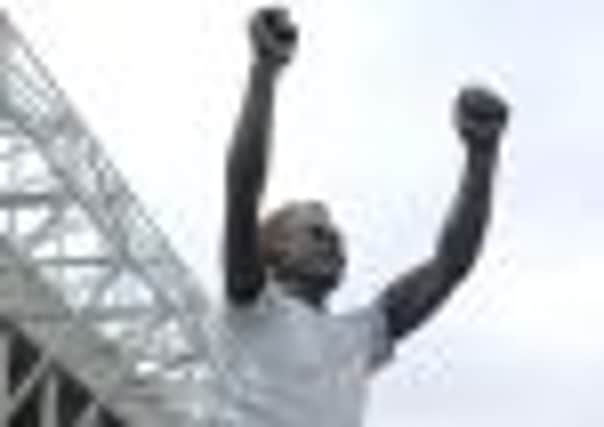The plinth of players... icons who carved a place in history


To be cast in bronze or stone you have to have done something extraordinary, so while it’s surely only a matter of time before Lionel Messi is immortalised outside the Nou Camp in Barcelona, there’s unlikely to be a rush to build a statue of Joey Barton when his football career draws to a close.
There are 120 statues of sporting stars in the UK, with a further 18 planned, and now, for the first time, a database of the great and good has been compiled by academics at Sheffield University. This comprehensive list – part of a study called From Pitch To Plinth: The Sporting Statues Project – features everyone from World Cup winners and F1 racing champions, to golfing greats and stars of the track and field.
Advertisement
Hide AdAdvertisement
Hide AdThe online database features links to maps, information on when the statues were unveiled, who sculpted them and the inscriptions on plinths and plaques, as well as pictures of each statue.
“Our sporting statues, their location and choice of subjects reflect not only the sporting history of the nation, but also the place of sport in today’s society and the kinship felt by fans,” says Dr Chris Stride, from Sheffield University’s Institute of Work Psychology.
There are seven sporting sculptures in Yorkshire, with four in Sheffield, and one in Skipton, Barnsley and Leeds, although this will increase when Graham Ibbeson’s statue of former Leeds United manager Don Revie is officially unveiled outside Elland Road in May. It won’t come as a surprise to most people that almost half of the existing statues depict football players or managers, but equally it’s a shame that more of our great Olympians aren’t featured on the list.
Only rowers Steve Redgrave and Matthew Pinsent, ice-skater John Curry and athletes Steve Ovett and Eric Liddell have been honoured with a statue for their achievements. On the other hand, Rugby Union players, with 15 statues, and motor-racing drivers or riders, with 18, are becoming increasingly popular statue subjects.
Advertisement
Hide AdAdvertisement
Hide AdThe research behind the study has revealed some interesting facts. For instance, we know that the first life-size statue of a British sports star was placed by the grave of Reading motorcycle racer Bernard Laurence Hieatt, following a fatal crash in the early 1930s, while the first footballer to be portrayed was Swindon Town’s Harold Fleming in 1956.
Most football statues are found at the player’s “home” stadium, so visitors to Elland Road can see former Leeds United captain Billy Bremner, while fans can pay homage to Sheffield United legend Derek Dooley at Bramall Lane.
Dr Stride says the idea of building statues of sports stars is a relatively modern one. “Only a handful of statues pre-date the 1980s, and over two-thirds have been unveiled since 2000.”
In football they have become part of the branding process, with clubs using them not only to celebrate their history but to raise their profile and gentrify their stadiums.
Advertisement
Hide AdAdvertisement
Hide AdIn other sports they can become shrines. “In sports with a greater element of danger, such as boxing and motorcycle-racing, statues are more typically memorials for deceased heroes, many of whom were killed whilst pursuing their sporting dreams.
“Such monuments are organised and funded by fans, illustrating the strong sense of community shared by followers of these sports.”
But what makes a great sporting statue? Barnsley-based sculptor Graham Ibbeson has created statues of Yorkshire legends Fred Trueman, Dickie Bird and most recently Don Revie. He says the key ingredient is capturing something of the person’s personality that other people will recognise. “With Don Revie it was the way he looked, he had a characterful face and when I picture him I think of his mop of wavy hair and his sheepskin jacket.
“With Fred Trueman, people think of this raging bull, but I did him smiling because when he was bowling he knew from the moment he released the ball that the person at the other end of the wicket was out and it’s that wry smirk I put in there, because that’s what he did with his mouth.”
Advertisement
Hide AdAdvertisement
Hide AdWe revere legends like Trueman because of their unique talent, but the statues built in their image aren’t just monuments to great sporting heroes, they’re also a reminder of the shared memories of all those who had the pleasure of watching them in their pomp.
For more information about The Sporting Statues Project visit www.sportingstatues.com.